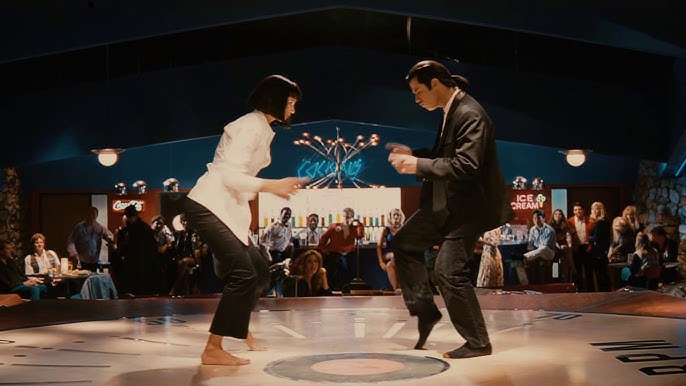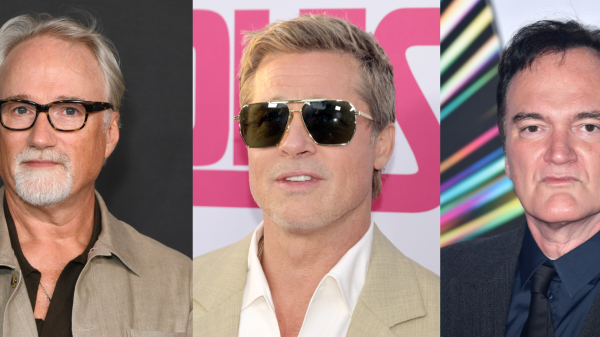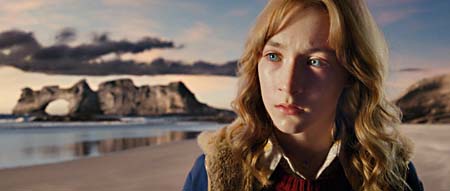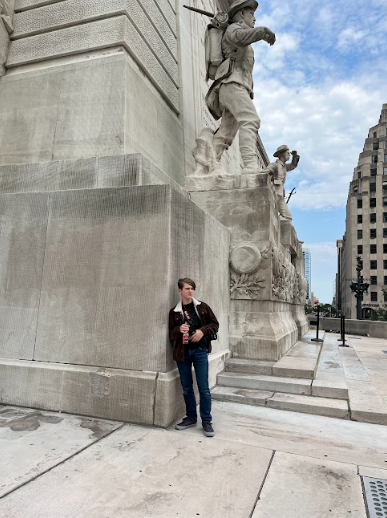When Citizen Kane was released in 1941, it changed the filmmaking industry. Critics and film historians cite its influence in editing, with its transitions and the way that it told a story was unheard of until that point. Until the year 1994.
Enter Quentin Tarantino, who, along with his friend and colleague Roger Avary, wrote the most influential film of the 90s, and radically altered cinema forever.
Pulp Fiction is writer-director Tarantino’s second feature, after 1992’s Reservoir Dogs, which wasn’t a massive hit on release. Tarantino and Avary worked together in the Video Archives, a video store in California, and had spent time writing a four hundred page spec-script for a film titled “The Road”, which would later be broken up into two scripts, True Romance (1993) and Natural Born Killers (1994), which Tarantino sold to finance the production of Fiction.
The film tells the interconnected stories of hitmen Vincent Vega (John Travolta) and Jules Winnfield (Samuel L. Jackson), boxer Butch Coolidge (Bruce Willis), gangster Marcellus Wallace (Ving Rhames) and his wife Mia (Uma Thurman). The film supports a massive supporting cast, including Tim Roth, Harvey Keitel, Steve Buscemi, Tarantino himself (who all appeared in his previous film), Christopher Walken, Amanda Plummer, Phil LaMarr, Rosanna Arquette, and a few more familiar names that film buffs might recognise.
A part of the universal appeal of the film is the way in which each of the stories are connected. Tarantino has made a name for himself with many of his films playing out with their events out of order, and Fiction might be the most iconic example of that. It has a brilliant five-chapter (three main stories, a prologue, and an epilogue) narrative that fits together like a puzzle afterward. The stories themselves seem unrelated to each other, but Tarantino manages to weave them together in a cohesive way. He has said that the stories are meant to be the most “basic crime stories in the book”, but he instead shows the audience the other side of these events, the ones that wouldn’t ordinarily be shown.
Pulp Fiction boasts one of the greatest screenplays ever written. It became a Tarantino trademark with Reservoir Dogs to have characters discuss popular music and movies, and after the release of Fiction, films were written to be more meta and culturally in-tune. The script also features a high level of profanity, in the vein of Martin Scorsese, but is rarely gratuitous. Another Tarantino trademark would become the usage of racial slur (sometimes by white characters) and it has long since been a cause of controversy with Tarantino’s films, which can make them tough pills to swallow for some viewers.
Looking past the harder edge of the dialogue, Pulp Fiction has a plethora of colorful and memorable characters, few of which embody stereotypes and feel like real people. While many of them are morally gray gangsters, hitmen, or drug dealers, they manage to be likable as they experience the outlandish events of the story. Part of what makes the quotes so quotable is the way that the actors deliver the lines (“I mean, I wouldn’t go as far as to call the brother fat. He’s got a weight problem. What’s the [guy] gonna do, he’s Samoan.”), which is to be expected with such a filled-out cast.
The soundtrack for the film is quite important for the experience, and it’s a well-known fact that the score is composed entirely of pre-existing pieces of music, a lot of which is surf rock. Tarantino has described the choice of music as “almost like Morricone spaghetti western music”, which gives the film both a modern and retro feel. Many scenes in the film are set with music that is playing within the scene, such as the opening credits, which radio static is heard as the song changes from “Misirlou” by Dick Dale and the Del-Tones to “Jungle Boogie” by Kool and the Gang.
Fiction is chock full of references to film and TV, which is another staple of Tarantino’s films. The iconic twist sequence between Travolta and Thurman invokes Travolta’s 1977 film Saturday Night Fever; the Butch Coolidge character was designed to mimic Ralph Meeker’s Mike Hammer from the 1955 noir film Kiss Me Deadly; and the briefcase mimics other famous MacGuffins (an important item that pushes the story along) such as the money in Psycho and the briefcase in Kiss Me Deadly. There are also references to films such as Deliverance (1972), The Toolbox Murders (1978), Raiders of the Lost Ark (1981), The Killers (1947), and Sergio Leone’s Dollars trilogy.
If Reservoir Dogs was the first time a Tarantino vision came together, then Pulp Fiction is the film that showed audiences what the filmmaker was really capable of. It is a quite violent film, though it somehow manages to show restraint in its most violent moments. It is a profane film, though it rarely feels overly mean-spirited and hateful. It is a film that pulls influence from other films, yet it manages to feel like something completely original and never-before-seen. It can be overwhelming, but when looked at as one of history’s most important pieces of pop art, it is a film that everyone should at least try to watch once.
Perhaps the last Tarantino staple perfected with Fiction are hard-edged, morally-ambiguous characters in stories that are oddly personal and can have some actual emotion to them. The moment when Butch and Marsellus, men who have been at each other’s throats the whole film, reconcile their differences after an altercation with deviant hillbillies, is one of the film’s strongest. Tarantino’s later films will explore the theme more heavily, specifically in 2015’s The Hateful Eight, and here it does nothing but add to the poignant conclusion of the film.
It is hard to overstate the influence of Pulp Fiction, 30 years later. It reignited the career of John Travolta (maybe it’s time he had another reignition), launched Quentin Tarantino into the mainstream, and popularized the meta, culturally in-check films that populated theaters in the latter half of the nineties. Even now, films are written with fast, witty dialogue and “creative” use of profanity, all because QT created a film where all of it worked. It certainly isn’t a film that everyone will like, but it has a degree of universal appeal that will forever keep it as a staple of modern cinema.
“So we’re cool?”
“Yeah, we cool.”









